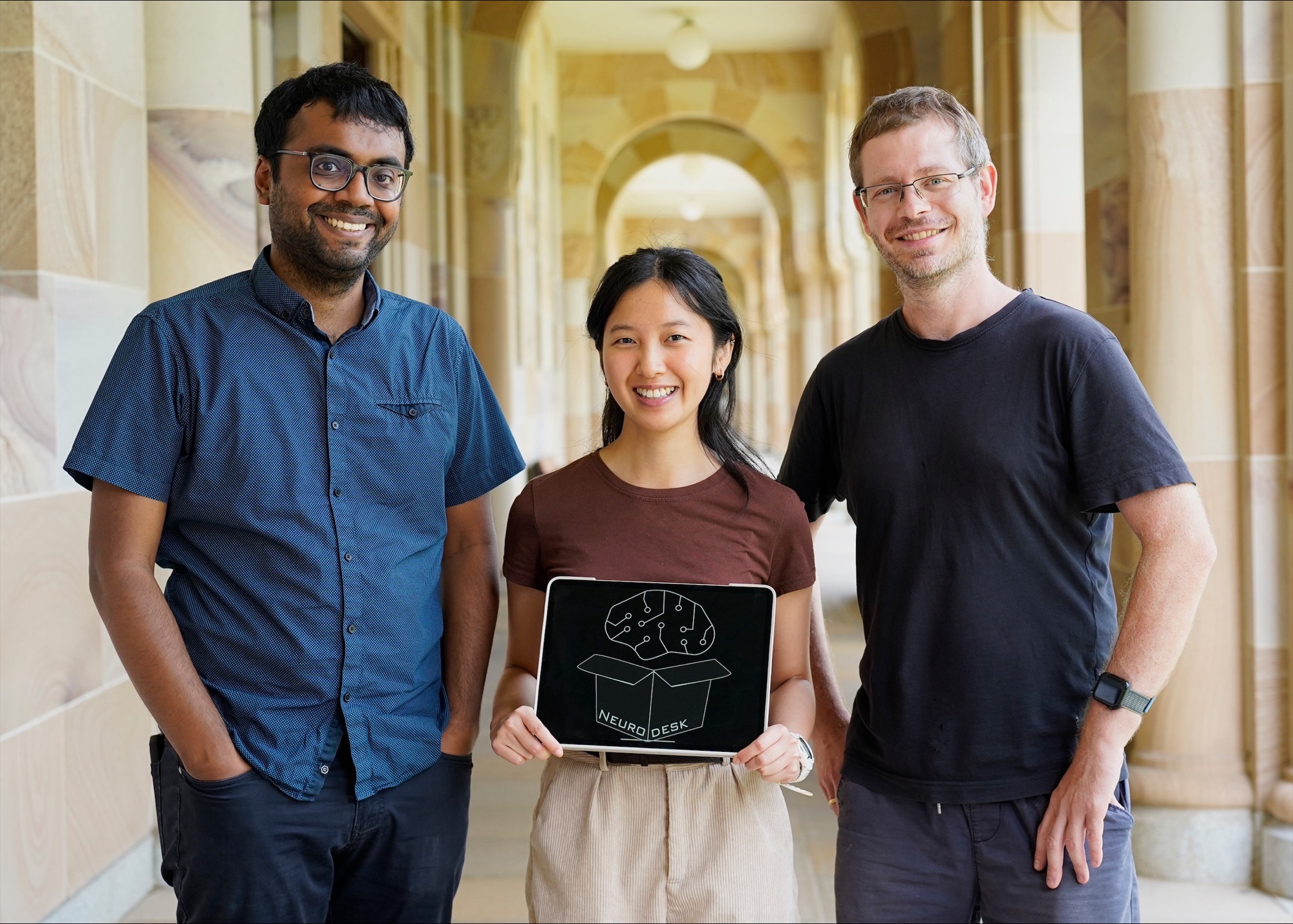Researchers at The University of Queensland (UQ) have developed a revolutionary platform poised to shape the future of understanding the human brain.
Published in Nature Methods today, Neurodesk combines open-source neuroimaging tools into a fully reproducible platform with the potential to unravel the mysteries of brain-related disorders, including depression and Alzheimer's.
Dr Steffen Bollmann from UQ's School of Electrical Engineering and Computer Science said a key outcome for Neurodesk was to enable neuroimaging data from around the world to function seamlessly across different operating systems and browsers.
“The underlying mechanisms of brain disorders including neurodegenerative diseases like Alzheimer's and Parkinson's, psychiatric conditions like schizophrenia and depression, and neurological disorders such as epilepsy are still not completely understood,” Dr Bollmann said.
“By simplifying neuroimaging, fostering collaboration and empowering scientists to handle large datasets, this breakthrough not only advances our understanding of the healthy human brain but also sheds light on the intricacies of various brain disorders, promising improved diagnostics and treatments in the future.”
By addressing a crucial challenge faced by researchers - efficient processing of extensive neuroimaging data - Neurodesk removes a significant bottleneck hindering deeper exploration of the complexities of the human brain.

Image credit: Dr Nicholas Hamilton.
“Currently, researchers and clinicians use many different platforms that aren’t connected and are often only able to be understood with extensive technical expertise,” Dr Bollmann said.
“Our team have introduced user-friendly tools and interfaces that simplify neuroimaging to provide a valuable resource for clinicians involved in brain imaging and related clinical applications.
“This accessibility ensures a broader range of researchers, including those without extensive technical expertise, can delve into the intricacies of human brain function to transform the landscape of brain-related healthcare and research.”
The work is carried out in collaboration with Swinburne University of Technology and The University of Sydney funded through an ARDC platform project, with further grant support from Oracle Cloud and The University of Queensland.
The study was published in the scientific journal Nature Methods and can be accessed by journal subscribers at https://www.nature.com/articles/s41592-023-02145-x



